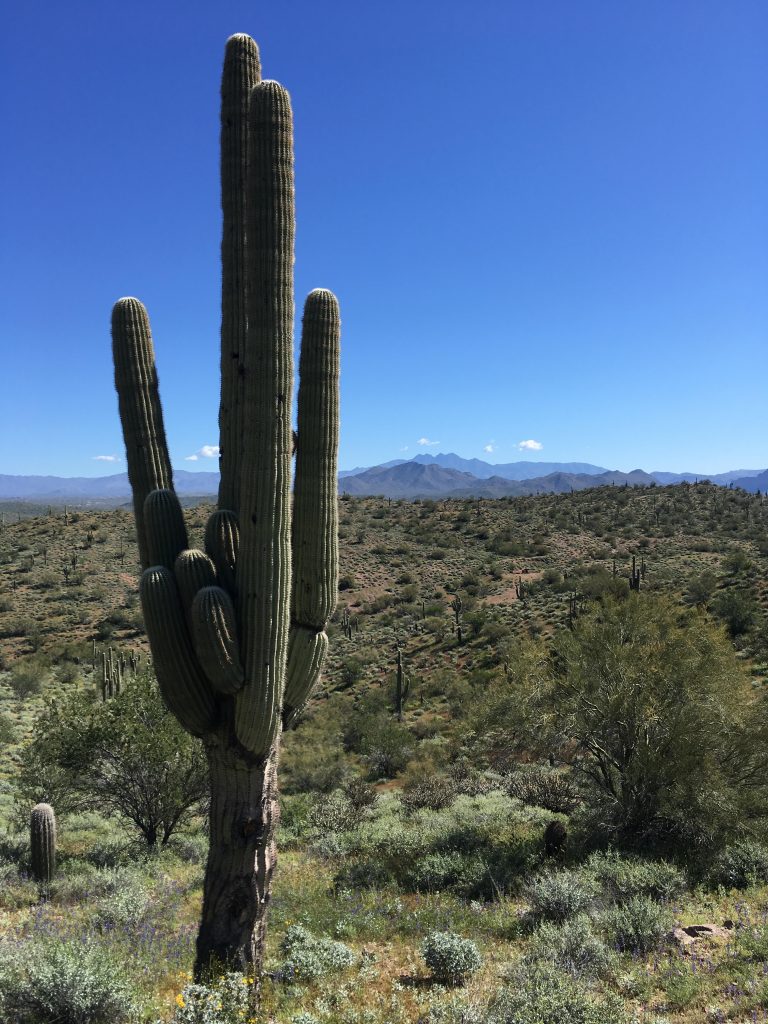July 22, 2019
For ecologists who study how plants respond to climate changes in the hot deserts of North America, hoarding has its uses. At least, the hoarding done millennia ago by prolific packrats does. In a new study out this week in Ecology, these ancient desert packrats left valuable clues—clues that helped NAU researchers to decipher what kinds of plant species are best able to move during extended periods of warming and drying. The research team, led by Bradley Butterfield from NAU’s Center for Ecosystem Science and Society (Ecoss) and including Scott Anderson from the School of Earth and Sustainability, found that a plant’s evolutionary build—its growth form (tree vs. shrub) and how its seeds are dispersed—are strong predictors of how quickly it can move to a more favorable climate when its current one becomes hotter or drier. Their findings sync with other studies about how plant species disperse over shorter distances and time periods, and provide guideposts for predicting which plants are most climate-mobile.
The clues on which Butterfield and his collaborators from SUNY-Buffalo and the U.S. Geological Survey relied come in the form of ancient middens—the nests that packrats make with nearby plant material and inadvertently fossilize with their urine, called amberat. By analyzing data about what types of seeds and branches appeared in packrat middens in the Mojave, Chihuahuan and Sonoran Deserts tens of thousands of years ago, Butterfield’s team was able to flip back through the pages of the continent’s history. There, they found a clear record of which plants moved first to a more habitable climate during the last 10,000-year period of significant warming, and which straggled behind.
Which plants tended to move into new territory fastest followed the logic of wind and muscle: being taller (a tree) extends the distance your seeds can travel on the wind, and having fruits or seeds eaten by birds or animals like coyotes extends that radius even farther. Grasses and wildflowers closer to the earth don’t benefit as much from wind dispersal, and few have features that attract bird and mammal dispersers to eat them, causing them to lag behind larger, animal-dispersed species by an average of 2,000 to 5,000 years.

“Our results suggest we can predict how quickly a species can move to a newly suitable habitat based on fairly simple traits,” Butterfield said.
That’s useful as scientists try to understand better how plants are responding—and will respond—to anthropogenic climate change.
Why a species stays longer in a changing climate is less clear-cut than who goes first. Shorter, small-seeded shrubs tended to stay put the longest, lagging the leading edge of a migration by an average of more than 6,000 years. While small seeds may persist longer than large ones, Butterfield said, traits don’t seem to explain the whole story when it comes to plants that lag.
To assemble a picture of past climates, paleoecologists have long used other clues such as pollen records drawn from soil cores. But pollen can travel hundreds of meters on the wind and therefore provides a grainier image than the middens, whose builders operated within 30 meters. That smaller range offers a higher resolution picture of exactly where a particular species was living and how far it moved over millennia. And though middens have been an appealing tool for scientists to use for several decades, Butterfield’s team was the first to apply modern “big data” techniques that allowed them to use “climate niche estimates”—how hot or how dry a climate a species can endure—to estimate how fast plants would have moved if they had kept perfect pace with past climate warming.
“By zooming out, we’re able to see the full suite of responses plants have to a changing climate,” Butterfield said, “and we see that these impacts are long-lasting.”
In another recent study, published this June in Global Ecology and Biogeography, the researchers used the same set of packrat middens to demonstrate that plant communities migrated at about one quarter of the rate necessary to keep pace with climate warming during the last deglaciation that began about 20,000 years ago. Their findings suggest that to this day, plant communities are still migrating in response to that warming period that ended over 10,000 years ago.
With these observational clues in hand, Butterfield wants to test these findings in experimental conditions. By planting certain species in climates along a gradient of elevated temperatures, he hopes to learn whether contemporary desert trees and shrubs will respond as their ancestors did to climate shifts.
One question that looms for ecologists like Butterfield: Do these desert trees and shrubs have the capability to keep up with the accelerating pace of climate change?
“Our work provides some clear predictions as to which plants may be in greater need of interventions like assisted migration during the period of rapid climate warming we’re experiencing. We also have to look at changes to the whole ecosystem, like collapsing populations of birds and large mammals. Even those animal-dispersed trees that migrated so quickly in the past could be in danger if the birds that fly their seeds hundreds of miles are no longer around.”

Kate Petersen | Center for Ecosystem Science and Society


